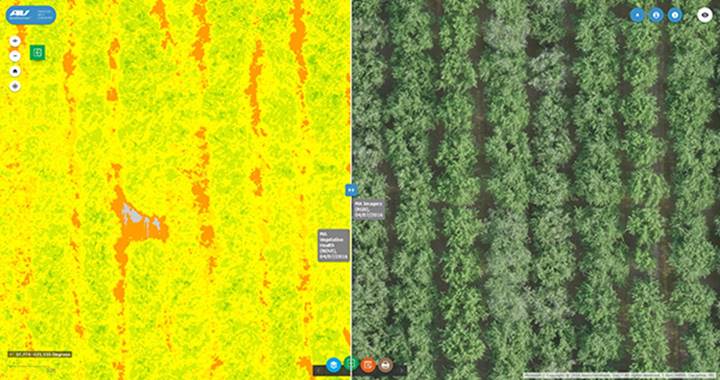January 24, 2017

Commentary
They won’t know until September, but California orchardists might find that their plots of trees look better from above than they do from ground up. Photos taken from unmanned drone aircraft will help them decide.
The drones are already circling above the orchards at Fresno State, taking photos that university staff will analyze. The views are expected to show some features, both good and bad, that might be overlooked when inspecting tree conditions only from the ground. It’s another high tech application to California’s high production farming.
Of course, when the aerial photos show orchardists that their trees look worse from above than from below it will be a signal to take action they might not have anticipated or planned. Spotty leaf or bud development in the upper trees might dictate irrigation or fertilizing steps that the grower overlooked or didn’t know was necessary.
All in all, the additional view will provide visual information the grower can use in his continuing program of ensuring optimum tree health and ultimate production. Just like a crop of animals, trees need constant attention if they are to remain healthy and produce profitably.
Though a relatively small orchard of 20 acres might seem less demanding, it will contain upwards of 2,500 trees; each with its own needs if not personality. Obtaining an overall view of each tree’s appearance with the help of the drone cameras will direct the grower in making adjustments to his orchard maintenance program, just as a cattleman might adjust feed or other nutrition levels for an animal in need.
With the high-tech orchard application comes high tech language. The aerial overview called multispectral is supplied by AeroVironment Inc., a company with experience in commercial and military unmanned aircraft systems. Its Puma UAV unit features a 24 megapixel photogrammetric camera and six-channel multispectral sensor.
AeroVironment’s Jon Self told the popular farm magazine Western Farm Press that his company hopes to develop a reliable and effective means of “correlating multispectral data with almond tree hydrating data to provide growers with better insight so they can proceed with certainty.”
Anything but certainty has been offered by the drought conditions of the past four or five years, so growers don’t mind learning the complicated language of high tech if it means relief from drought damage.
AeroVironment’s cloud-based analytics platform, DSS, will process and analyze data from the cameras to compare with ground measurements. The firm says the research team will use “linear and non-linear geospatial data algorithms for statistical correlation and predictability validated by ground-level hydration data.”
The experiment with the drones is coupled with close measurement of the hydration levels of the almond trees under observation, and environmental and crop conditions indicated by soil and plant sensors.
From the researchers’ point of view, the technology they are offering will help growers of the state’s enormous almond crop make better decisions about the precise amount of water needed to gain optimal yield. Water thriftiness is something all California residents can appreciate and applaud.
The information released so far doesn’t indicate if any of the trees have been tested for their response to the close observations. Being caught “on camera” all the time might be to their liking, and that’s a plus as long as they don’t start demanding make-up artists and private dressing rooms.
(Note: The views expressed in this commentary are solely those of the guest author, and are not necessarily shared or endorsed by Western Farm Press).
About the Author(s)
You May Also Like




